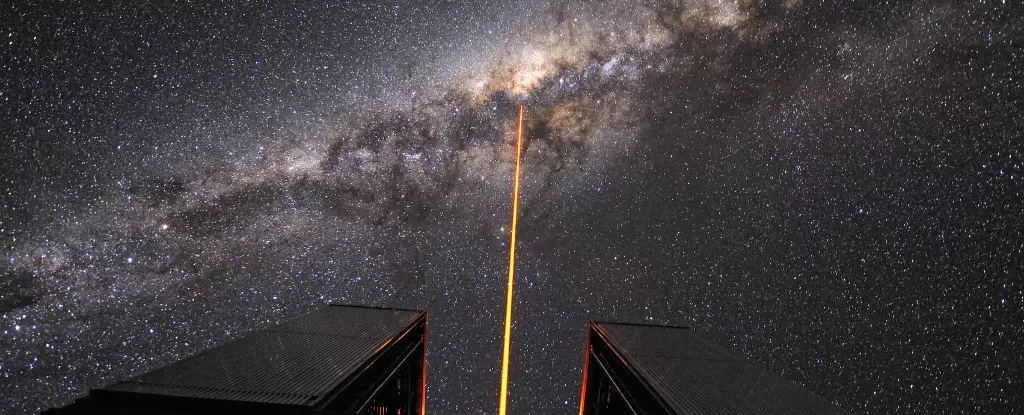Deep within the Milky Way galaxy, approximately 27,000 light years away from our planet lies a supermassive black hole known as Sagittarius A*. Spanning a staggering 23.5 million kilometers in diameter, this black hole has intrigued scientists for decades. Recently, researchers from the University of Cologne, led by Florian Peißker, have made a groundbreaking discovery by identifying a binary star system orbiting this enigmatic giant. This revelation not only enhances our understanding of black holes but also provides critical insights into why certain stars possess remarkably high speeds as they traverse galactic space.
The term “binary star system” refers to a pair of stars that orbit around a common center of mass. Unlike our Sun, which exists as a solitary star, binary systems are relatively common, with approximately one-third of the Milky Way’s stellar population cohabitating within such pairings. This forms a crucial point of study for astronomers, as the dynamics of binary systems yield data on the physical properties—like mass and distance—of celestial bodies better than those of single stars, where brightness often serves as the sole indicator of mass.
Identifying a binary star system near a supermassive black hole poses significant observational challenges. The team of astronomers employed advanced techniques using the European Southern Observatory’s Very Large Telescope. Rather than directly observing the stars, they relied on the Doppler effect to detect subtle shifts in starlight. These variations in light indicated a distinct wobble, signifying that the stars were in orbit around each other.
Moreover, the findings revealed that this binary system is approximately 2.7 million years old, indicating that the stars ignited into existence around this time. Interestingly, these stars likely are not the products of the black hole’s intense gravitational influence but possibly entered this vicinity only recently. This observation implies fascinating implications for the behavior of stars in close proximity to black holes and how long they can endure these extreme conditions.
To make sense of the gravitational interactions at play, one can draw parallels with the Earth-Moon-Sun system. In this analogy, the Earth and Moon orbit around a common center while simultaneously traveling together around the Sun. The stability of this three-body arrangement hinges on the proximity of the Earth and Moon to one another compared to the distance to the Sun.
However, celestial interactions can become unstable under certain conditions. For example, where multiple bodies are concerned, the gravitational dance can lead to the ejection of one body entirely from the system. This troubling dynamic may provide the framework for understanding “hypervelocity stars,” exceptionally fast stars observed racing through our galaxy at speeds exceeding 1,000 kilometers per second.
Understanding hypervelocity stars is essential for piecing together the cosmic puzzle surrounding black holes. Most stars orbit the Milky Way’s center at a modest pace of around 200 kilometers per second, but hypervelocity stars, first discovered in 2005, challenge this norm. Current theories propose that these stars were once members of a binary system near Sagittarius A* that fell prey to the black hole’s gravitational might. When the system destabilized due to close proximity to the black hole, one star was violently ejected while the other remained bound, resulting in the high-speed trajectories now observed.
Evidence supporting this theory is bolstered by observations showing many hypervelocity stars appearing to shoot away from the center of our galaxy, consistent with the mechanics predicted by current models.
The recent discovery of a binary star system orbiting Sagittarius A* marks a significant breakthrough in our quest to understand the complexities of black holes as well as the behavior of stars within their perilous gravitational influence. As astronomers continue to investigate the galactic center, each new piece of information reinforces the intricate tapestry of our universe.
With ongoing advancements in observational technology, as well as theoretical models, we stand on the cusp of illuminating more celestial mysteries. This intersection of star and black hole dynamics holds promise for expanding human knowledge about the universe, ultimately revealing the breathtaking intricacies of cosmic behavior that govern our night sky.


Leave a Reply